Table of Contents
Over the past few years, we’ve picked up ways to dominate rankings in multiple industries. However, we’ve always wondered how to rank in multiple provinces or states without having a physical location or presence.
Why would we want to show up in jurisdictions we don’t service? There is a simple answer to this. We want to rank in a city we’re interested in eight-twelve months before we enter it.
There have been instances where we rank in a province or state before we officially set up shop. When that happens, our work is outsourced to trusted subcontractors.
I’ve tweeted about ranking multiple websites in the same area and sometimes get the odd person complaining that it’s not fair. Frankly, I don’t give two hoots about what they think.
I will do everything in my power (legally and not blackhat) to outrank our competitors and get that lead. If that means showing up with multiple websites or location pages and taking up more SERP real estate, so be it.
And let’s not forget, we compete with multi-national and multi-billion dollar companies. I have no problem taking a slice out of their profits since they’re already favoured by Google because of their massive authority.
Let’s get started.
Typical contact page
Let’s start with what the typical business does for their contact page including when they have multiple locations.
The heading for your typical contact page will be “Contact us”. Fair enough. That’s not too bad. It is what the page is about.
You’ll then have a single sentence asking visitors to call or contact them through a contact form. Someone from the business will be in touch in less than 24 hours (it should be less, to be honest).
There will be a contact form, of course. If you’re lucky, you’ll have a map of each location on the contact page.
That’s it. That’s all there is to it.
Since we’re renegades, we try to step outside the box and think externally for all of our landing pages.
I am going to break you out of the typical mindset and I hope you use what I am talking about today wisely.
How some companies try and fail at my strategy
Some companies rely on an SEO team to rank for multiple cities. Most SEO agencies produce hot garbage. Maybe I can credit them for trying but they fail miserably with the execution, it’s just embarrassing.
Let me share an example. Milani is a local plumbing company where I live. They service many locations in the Lower Mainland.
Their SEO team half-assed their contact pages by repeating content for multiple pages but just changing the city on each page.
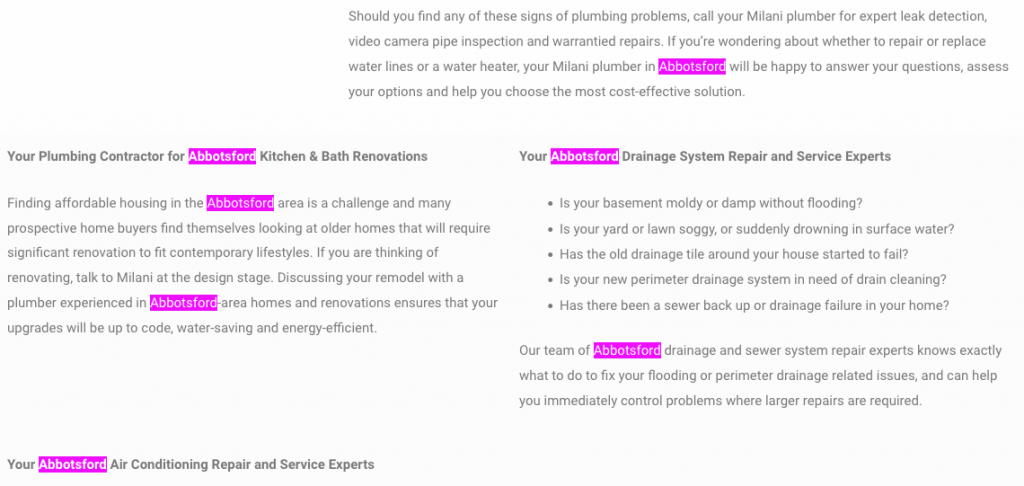
They do this for a bunch of cities:

It’s blatantly obvious that these pages are meant for search engines and not people.
It’s sad to see business owners get hoodwinked by “marketing” agencies like this.
Yes, they got you ranked but did you look at the content? Does it serve past, current and future customers? Does it make you look good? No? Then you’re dealing with a cookie-cutter agency.
How I am setting up our location pages
I don’t complicate the main contact page (/contact/). A lot of SEOs try to stuff this page with keywords thinking it will have them rank higher than websites like Home Depot or Rona. Not the case in our industry. Cookie-cutter strategies don’t work as well as they used to.
In our case, we include:
- The main headline
- Sub-headline
- Search bar to look for a location if there are more than ten
- Filtration system based on what’s available for each location
- Separation of countries if there are multiple locations across different countries
- Each location can be clicked on for more details
- Contact form
- Content explaining why a visitor should contact our company with a video
As I said, we keep it simple and clean. The visitor is on the contact page to either find a location, call the business, or use the contact form to ask us a question.
The main headline
I’ve started to treat our contact pages just like any other landing page.
Most SEOs ignore the contact page. As long as there is a form, address and phone number a marketing team thinks they’ve done their job. Not us.
I try to be a little more descriptive.
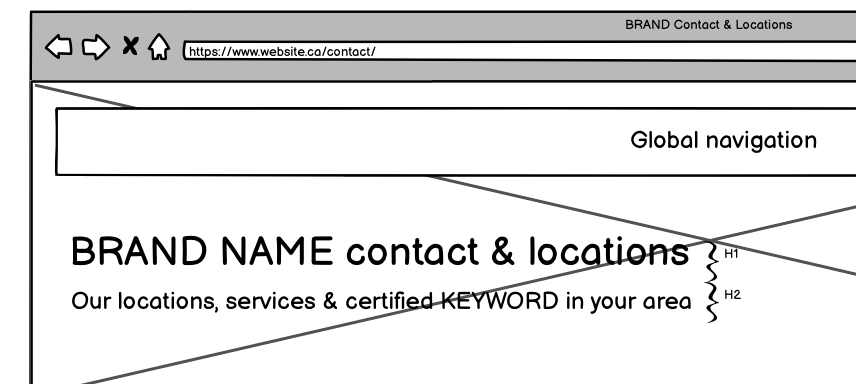
If you pay attention, I have a main headline and a supporting headline just like any other landing page we value.
Try to squeeze your primary keyword into your contact pages. Please be clever. I am not saying you should go and stuff your contact pages with keywords. Be helpful and tastefully include your main keywords.
Search function and filters
Most of you will not need a search and filter option on your contact pages. In fact, we don’t need them either. Not yet.
However, if anything can be a lagging SEO indicator, it can be a few verified locations across your area. With time, these locations will get love and if you play your cards right locally, you can dominate each city. Once you get to ten locations, it might be time to include a search box.

If you want to really get clever, include a filter for people to sift through the services offered by each location. Perhaps it would be better to include each service below the city name. I would test this.
All your locations across different countries
In our case, we have locations all over North America. Our Canadian website will have Canada at the top and vice versa for our American website.
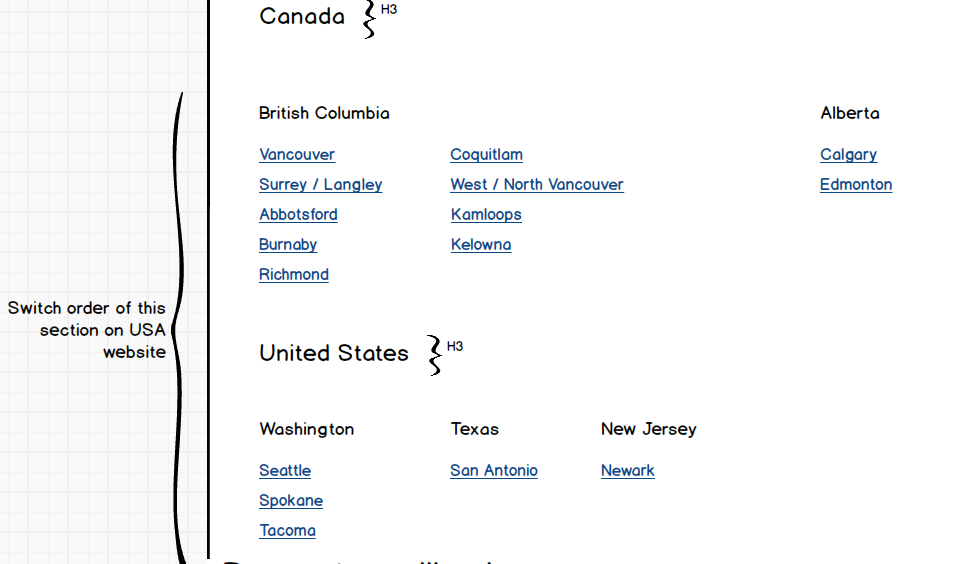
Each location will be clickable with its own dedicated landing page.
The contact form
You don’t have to scroll too much to get to our contact form.

Our contact form is self-explanatory. Once someone submits their information, they are directed to a thank you page.
Content and video for contact page
A little content on the contact page is ok as long as it’s relevant and explains what a visitor can expect by contacting your company.

We have a media team so we can generate videos on the fly but it isn’t necessary for everyone. We have the resources and it helps to differentiate ourselves from our competition.
Individual city pages
Let’s get to the fun part which is the individual city pages that really help your SEO.
Like the contact page, we start with the main headline and sub-headline with the city we’re trying to target.
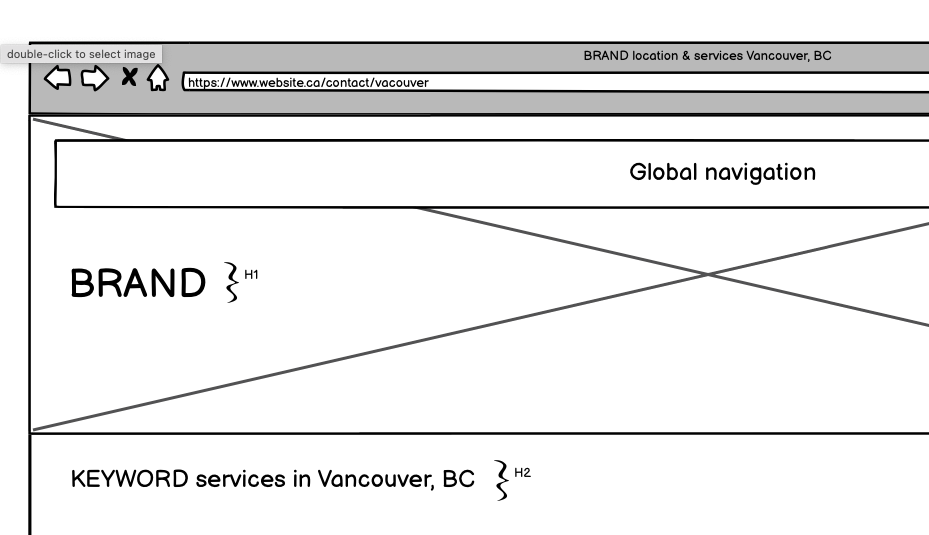
Personal working at each location
This section is where humanize the page by displaying the people working at the location.
Get as many people on this page as possible and monitor it religiously. This ensures you care about the staff and display your talent openly.
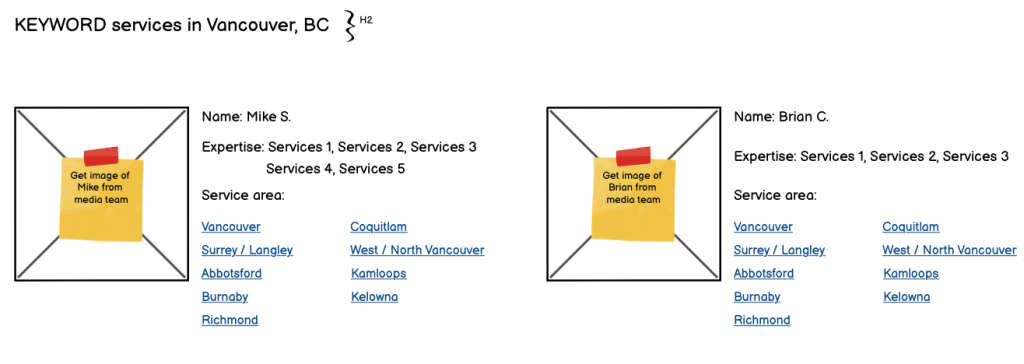
Services offered
Each location will probably have unique products or services. Even if all the services are the same in every city, I don’t think it’s a bad idea to include a service section on your location pages. It can repeat. Don’t worry about duplicate content issues.
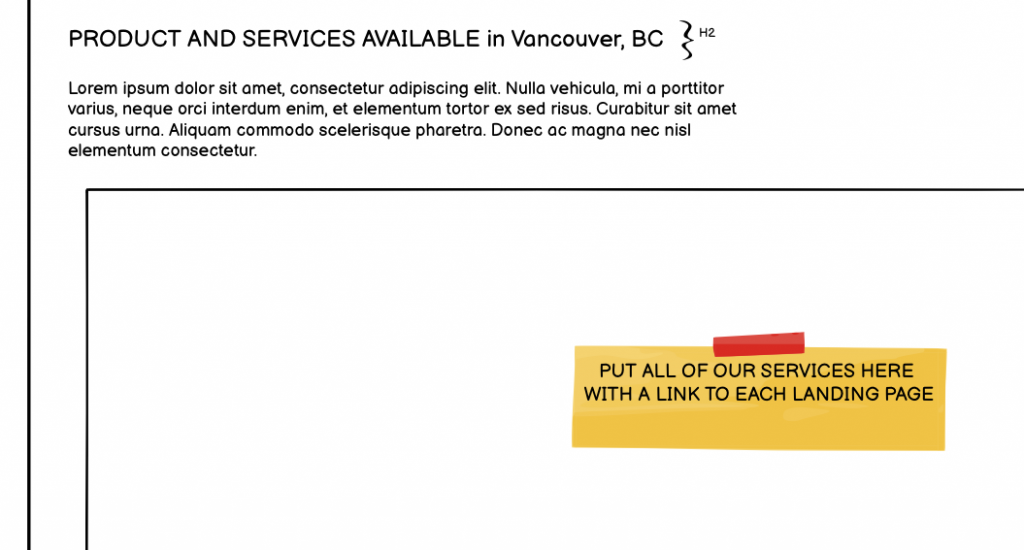
If your service pages start getting a lot of traffic. Test different sections and see what resonates with your audience. This isn’t a static game.
We have services and products in our case, so I’ve added two sections on our individual location pages. One is for the services we offer and the other is for our products.
Map and address
Finally, you have your map which includes your address and phone number.
If you have a central phone number, it might be in the footer or the header (this is what we do).
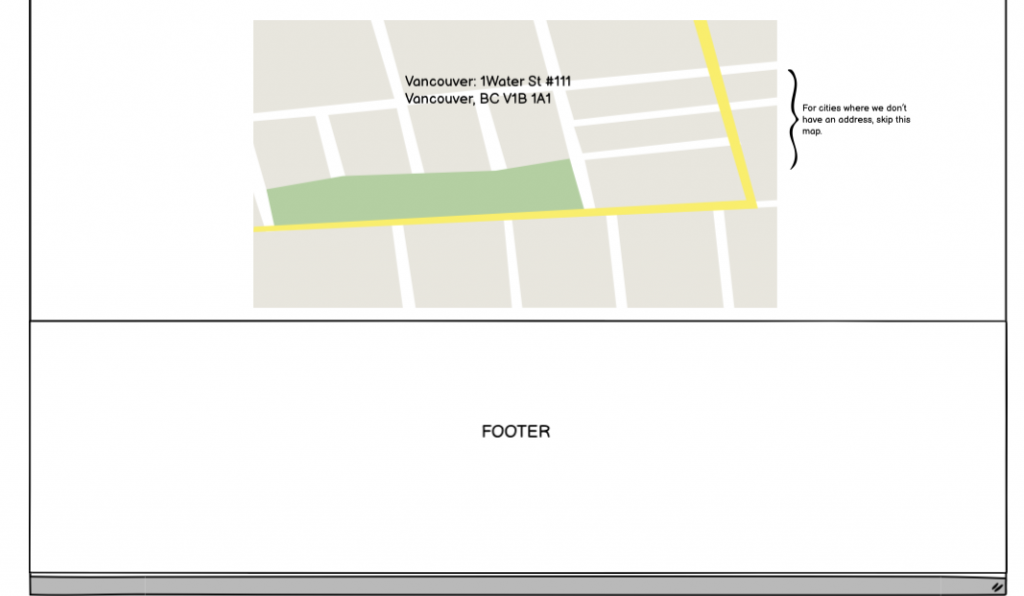
I don’t think you need to plaster the same phone number on every location page but it might help your SEO game if you include an address and a phone number on the right.
I am not 100% sure but I am going to test it.
Final thoughts
If you’ve read the whole article, I’ll give you a treat by providing the wireframe. Download it here.
None of what I’ve talked about in this post is an exact science. It’s working for us and maybe it won’t work for you.
What I am trying to do here is get you to think outside the box and come up with clever ways to help you rank locally and help your visitors at the same time.
Let me know if you have questions.
Until next time, catch you all on my next post.

